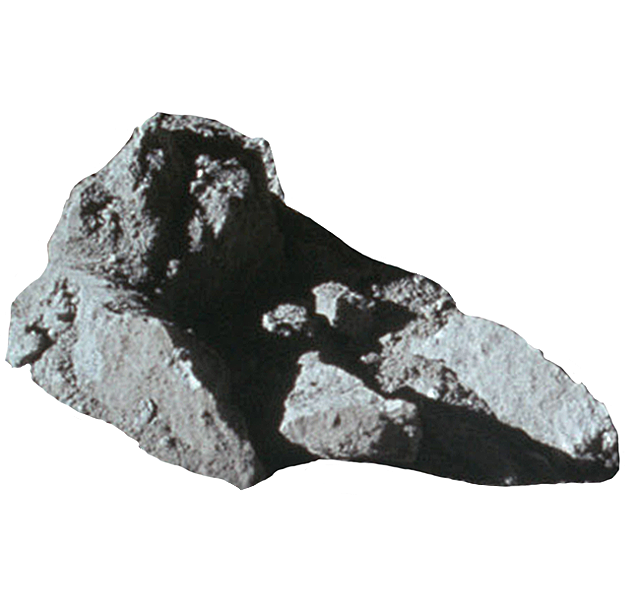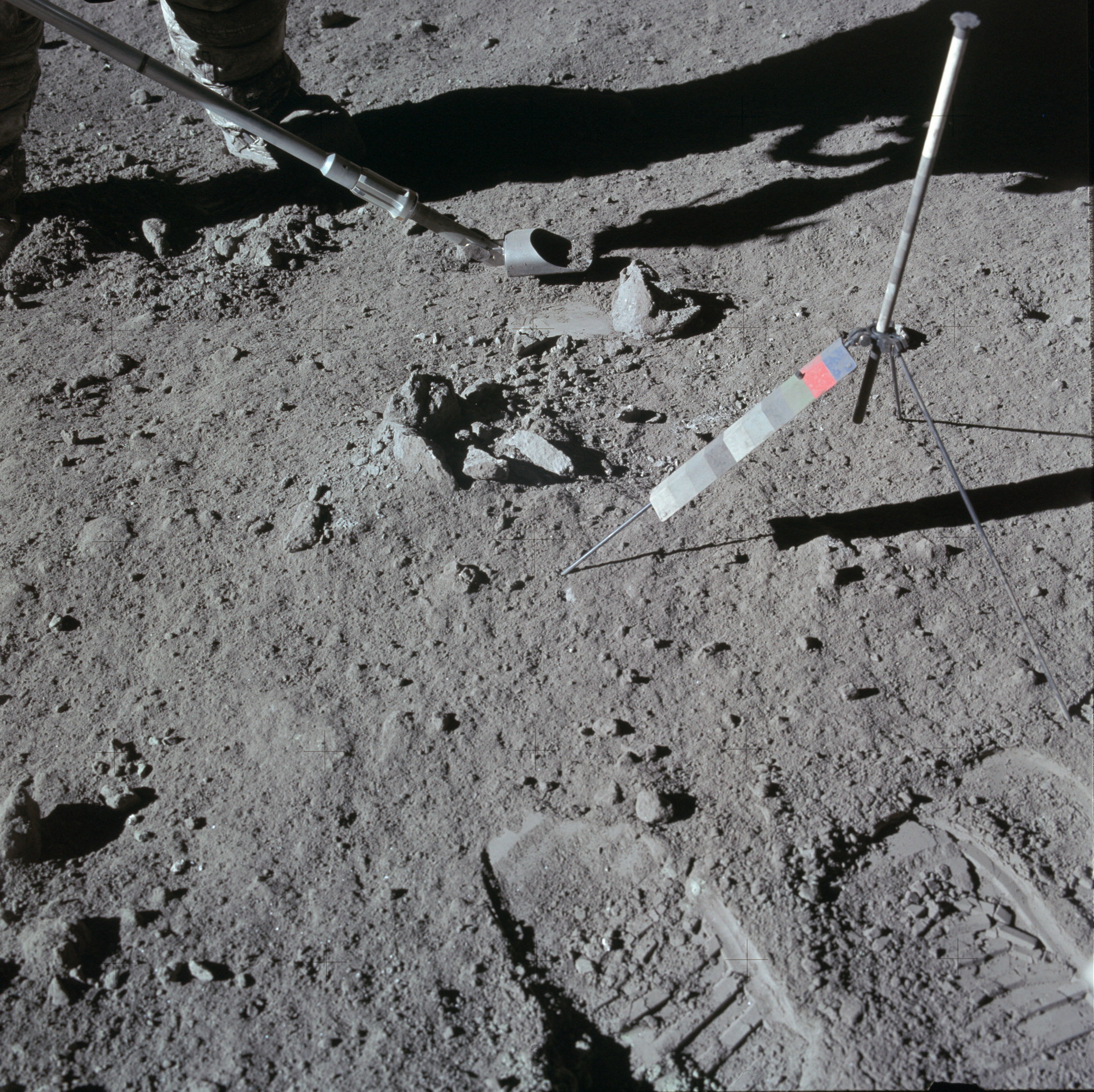
Fact sheet
15435 consists of 32 friable regolith clods. Thin sections show it to be a glass matrix breccia, but it has also been described as a swirl of banded glass, debris-laden glass and intersertal basalt. Multicoloured glass bands - green, light brown, orange, colourless, and red-brown are reported, although not all are present in our thin section. Rotation 1 shows a large clast of shocked anorthosite.
The sample weighed 206.8 grams before analysis and has not been dated.
Further details of this and other Apollo samples are here: http://curator.jsc.nasa.gov/lunar/
The Apollo 15 landing site was in the Apennine Highlands, and close to Hadley Rille — a long, narrow winding valley. Approximately 76 kg of lunar material, including soil, rock, core-tube and deep-core samples, were returned to Earth.
This mission was the first flight of the Lunar Roving Vehicle which allowed the astronauts to venture further from the Lunar Module than in previous missions. During three periods of extravehicular activity, or EVA, on July 31st, and August 1st and 2nd, Scott and Irwin completed a record 18 hours, 37 minutes of exploration, travelling 17.5 miles, in the first car that humans had ever driven on the Moon.
Apollo 15 was launched on 26 July 1971.







